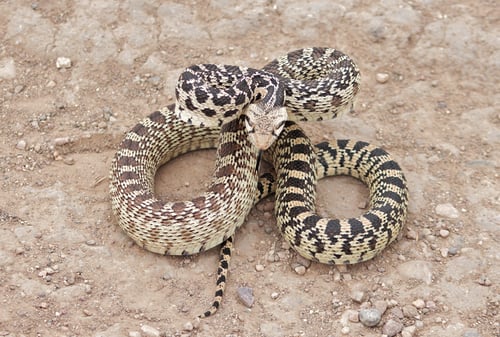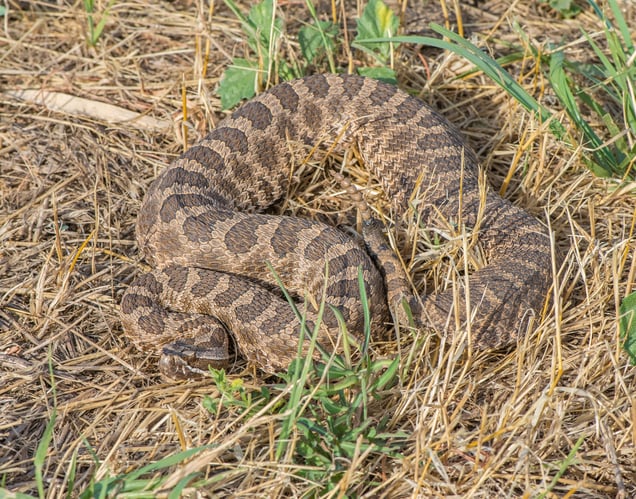Imagine you’re hiking your favorite trail through the montane shrublands and hear a small rustle in the vegetation by your feet. You immediately freeze in your tracks and concentrate on the ground until the rustling starts again; you’re now intensely staring at the ground to investigate the mysterious critter that is in close proximity. Is it a prairie dog? A grouse? A woodrat? Feet planted to the ground, you lean a little closer for a better look. It’s a snake, eek! You ask yourself, “why is there a snake in the mountains? I thought snakes lived in hot, arid habitats. Is it venomous? What do I do if it bites me? Are there more in the area?” Your snake friend slithers away disappearing into the tall brush leaving you puzzled and with many unanswered questions.
July 16th is World Snake Day and while snakes may get a bad rap for being scary danger noodles, they’re an essential part of our ecosystem! Colorado is home to twenty-nine species of snakes; two of which you can find right here in Eagle County. The most common snake you may come across is the Western Terrestrial Garter Snake, or the Wandering Garter Snake, which can be identified by a light yellow or white central dorsal stripe running from the back of their head to the tip of their tail and two similar stripes on each side of their body.

Adult Bullsnake in “S” shaped defensive posture
However, trying to identify this species can be challenging due to its extreme variability in color phases and patterns among individuals. Using color and pattern alone can be an unreliable and potentially dangerous method for trying to accurately identify a species of snake when you’re in the field. Older adult snakes or snakes about to shed their skin will have a very faint or almost no pattern at all making them appear solid in color. Herpetologists, a scientist who studies reptiles and amphibians, look at the shape and quantity of a snake’s scales rather than the color to identify a species. They look for specific diagnostic features including scutellation, the number of scales on the head, and whether the scales are keeled or smooth.
Western Terrestrial Garter Snakes have keeled scales, meaning their scales have a hard ridge in the middle giving them a rougher, less smooth look. They also can be identified by their eight individual labial scales on their head with the 6th and 7th scale being larger than the others. This garter snake can be found in almost any terrestrial or wetland habitat in the vicinity of virtually any body of water within its geographic and elevational range of anywhere below 11,000 feet in Colorado.

Western Massasauga Rattlesnake with strongly keeled scales
The other common snake species you may come across in Eagle County is the Great Basin Gopher Snake, or the Bullsnake. These snakes typically have keeled scales and a yellowish dorsum with numerous large, dark blotches that turn into narrower stripes towards the tip of the tail. Bullsnakes can grow up to 9 feet in length, which is three times the length of an adult Western Terrestrial Garter Snake. They are typically found in a wide variety of habitats across Colorado including plains grasslands, marshes, rocky canyons, semidesert and mountain shrublands, ponderosa pine and other montane woodlands at elevations below 8,500 feet.
While no venomous species are found in Eagle County, Colorado is home to three species of pit vipers: Prairie Rattlesnakes, Midget Faded Rattlesnakes, and Western Massasauga Rattlesnakes. These species can all be identified by having heat-sensing pits between their eyes and nostrils, and of course the distinctive rattle on their tails. When traveling into the desert or foothills of Colorado, make sure to keep an eye out for our viper friends. Just because they’re venomous, doesn’t mean they’re vicious! Remember, if you can’t safely identify a snake from a distance it’s best to leave it be.
Paige McAllister is a naturalist at Walking Mountains Science Center who has handled and worked with danger noodles for multiple scientific research projects (and for fun). Her mother does not approve.







